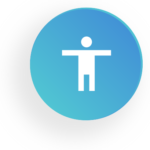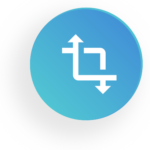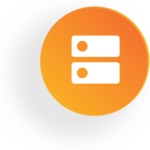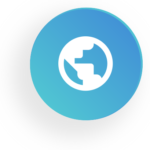The project consists of 10 work packages to ensure the quality of the EasyReading software framework. Here you can find our complete list of work packages:
- Workpackage 1: IPAR-UCD Methodology Development and Application
- Workpackage 2: Innovative Interface Concepts
- Workpackage 3: Tracking and Reasoning
- Workpackage 4: Profiling and Knowledge Base
- Workpackage 5: Automatic Translation/Annotation/Adaptation of Content and User-Interaction
- Workpackage 6: Easy Reading Service Framework
- Workpackage 7: Guidelines for Cognitive Web Accessibility
- Workpackage 8: Privacy, Safety, Ethics
- Workpackage 9: Dissemination, Exploitation & Communication
- Workpackage 10: Management
The deliverables of the different workpages can be found under Downloads.

Workpackage 1: IPAR-UCD Methodology Development and Application
Objective: Development of an Inclusive Participatory Action Research approach for R&D (Research & Development) in the sense of design based research.
Implementation: This IPAR concept, which meets with increased interest and application in social and educational domains, will be used and adapted for in engineering, interface design processes and for developing research techniques, methods and ICT (Information and Communication Technology) based tools for people with cognitive disabilities.
- Benefit: With the development of this new innovative method users with cognitive disabilities can actively participate in the design, research and development process of the following work packages.

Workpackage 2: Innovative Interface Concepts
Objective: Development of adaptive personalized user interface concepts for people with cognitive disabilities. Simpler format/structure Different layouts Translation/display in Plain/Easy/Symbol Languages Annotations/alternatives (e.g. synonyms, pics, videos, photos)
Implementation: These concepts will provide temporal/local overlays and translations of content when wanted and needed, e.g.:
- Benefit: These interface/presentation overlays will allow people with cognitive disabilities to get easier, efficient, individualized and self-determined & independent access to digital content.

Workpackage 3: Tracking and Reasoning
Objective: Development of tracking engines that uses sensors (eye-tracker, MS Kinect etc.) and user input (touches, mouse movement, keystrokes) to detect and understand the situation the user faces (e.g. attention, stress, confusion).
- Benefit: The work package defines the requirements of assistance needed to understand web content and how this assistance needs to be displayed for the individual user.

Workpackage 4: Profiling and Knowledge Base
Objectives: 1. Development of a module for individual user profiles and knowledge base that: reflects the cognitive and mental abilities of a person integrates and updates in real time parameters from tracking user behaviour includes a back-end that allows users and caregivers to influence and adapt the system. 2. Define a system that is capable of: matching requests for content simplification, applications and Web of things interfaces, simplification in combination with the user profile with the most suitable combination of engines that simplify content.
- Benefit: WP4 develops the required infrastructure and services that are needed to automatically convert content into another easy to understand format.

Workpackage 5: Automatic Translation/Annotation/Adaptation of Content and User-Interaction
Objective: Implementation of services to feed the interface with alternative format and display of content. Manual Translation/Annotation/Adaptation using a backend functionality At least 10 engines for automatic translation/annotation/adaptation of content structure and layout will be implemented based on intense study of the state of the art: Content Clarifier TexthelpEasy Symbol Annotation Videos Images/Symbols Layout/Structure TextToSpeech JSON personalization skins
Implementation:
- Benefit: WP5 will develop tracking services that determine the mood and the level of confusion and will therefore update the user profile accordingly in real time.

Workpackage 6: Easy Reading Service Framework
Objective: Development of a customizable and adaptable framework for adaptable digital content that is robust, flexible and validated. This includes: Ensuring that the framework is implemented and deployed in multiple practical environments. Integrate user needs, HCI widgets, engines, API’s and tracking and reasoning support with IPAR-UCD methodologies Will invoke support functionalities (based on automatic or manual features) called by the user as part of standard interaction or automatically based on tracking. As the user learns and gets familiar with the content and the way of interaction, also the system will learn and adapt (the profile) to the style of interaction and reduce, change or augment support. Promote adoption ongoing to guarantee the broadest possible uptake and sustainable development. Integrates with standards and practices
Implementation:
- Benefit: The Easy Reading Framework (WP6) will create the infrastructure to integrate developed services from WP3, WP4 and WP5.

Workpackage 7: Guidelines for Cognitive Web Accessibility
Objective: The W3C standards are adopted across Europe for developing web content. The W3C’s WCAG standard has been adopted by the commission and member states as the basis for digital accessibility requirements and policy. But integrating compatibility with our framework into the W3c standards we are guaranteeing that compatibility with the easy reader framework is the best practice way to develop professional Web content. This includes: Building the semantics protocol Maximise adoption and impact by integrating with the Web content accessibility standards adopted across Europe (WCAG) the WCAG’s Cognitive Accessibility Task Force of the W3C Accessibility Guidelines Working Group (AG WG) and support the techniques as in accessibility standards across Europe Integrate into new standards for personalization Integrate into HTML (where possible) Integrate into other related W3C standards Promote education and outreach
Implementation:
- Benefit: WP 7 will ensure that the infrastructure and required semantic support is as widely adopted as possible by integrating the project results into the W3C standards for how Web content is created.

Workpackage 8: Privacy, Safety, Ethics
Objective: Ensuring that issues related to privacy, safety and ethics are identified, avoided and mitigated in all parts and aspects of the project. For this we will create a framework to guide development of technology in this area with ethical considerations embedded in the development process. The main activities are: Identify necessary requirements to safeguard privacy, safety and ethics throughout the project. Ensure that the identified requirements are designed into the technical solution from the start. Propose, implement and verify measures and controls for identifying and mitigating risks related to privacy, safety and ethics during user testing. We will compiling a document with Safety, Privacy and Ethical Considerations in which all safety, privacy and ethical compliance to be observed. It will be followed independently in dedicated actions within our Work Packages given their importance on the acceptance of the final product and the impact of the project as a whole. WP8 will act as ombudsman for concerned users, e.g. to deal with any unexpected issues related to privacy, safety or ethics.
Implementation:
- Benefit: As the user profile contains very sensitive data privacy, safety and ethics (WP8) will be a major focus during the whole project ensuring that the data is handled in a secure way and that the user is able to control what and how his personal data is stored.

Workpackage 9: Dissemination, Exploitation & Communication
Objective: Promoting adoption, because without adoption the social and business potential cannot be actualised. The following will enable us to achieve this objective: The project “Easy Reading” applications for end users will be given free to Europeans with cognitive disabilities. This will promote European ideals as well as enabling independent applications to leverage the infrastructure and socialize their application bringing them to this new growth market. However this will only be effective if people with cognitive and learning disabilities and aging users across users receive access to the application and support to use it. This WP will promote dissemination of the application to at least one million end users and ensure they enjoy using it. Support developers and businesses and disseminate the framework usage and potential to these markets. Promote additional development and research This WP will take care of coordinating scientific papers, publications and publicity, workshop arrangements and communications (brochures, online presence and publications, flyers, vide, and on dissemination and communication of the state of the project as well as key results and development. The dissemination will create awareness and collaboration between the consortium and other parties, both in induastrial, academic interest groups and policy makers.
Implementation:
- Benefit: WP9 deals with the dissemination and exploitation of the results and the progress made within the project.

Workpackage 10: Management
Objective: The management aims at ensuring the effectiveness and the efficiency of the envisaged activities, pursuing the project’s objectives according to the time schedule, budget and the quality standards established, harmonizing the project results (also by mean of risk management and contingency planning).
- Benefit: WP 10 coordinates all other work packages.
